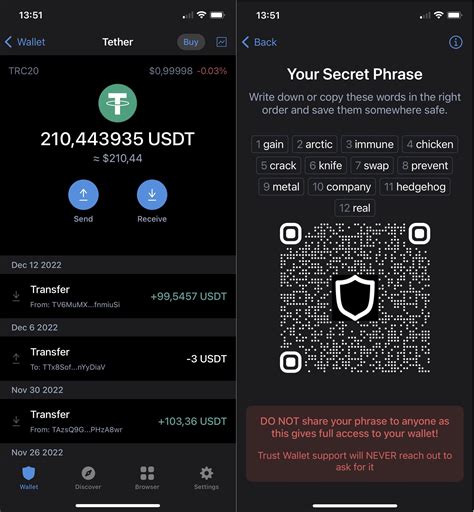Connect to Bitcoin network with Ethereum
As you develop the RAILS online application, you are probably interested in connecting to the Bitcoin network using the Official Ethereum API. In this article, we will go through the process of establishing a connection to the Bitcoin customer and its use for various tasks.
General presentation of Bitcoin Customer and Ethereum API
Before we dive into the examples of code, let’s review the basic elements quickly:
- Bitcoin customer is responsible for connecting to the Bitcoin network and communicating with miners.
- Ethereum API offers a set of resting APIs for the interaction with the Ethereum blockchain.
Connect to Bitcoin network using Ethereum API
To connect to the Bitcoin network, you will need to authenticate your requests, offering an Ethernaut 'account and a 12 -word crossing phrase. You can get these accreditations through the official portal [Ethereum Developer] (
Here is an example of how to set a connection to the Bitcoin customer using the Ethereum API:
Ruby
requires "net/http"

Configure authentication credentials
Account = 'your_account_address'
PASSPHRASE = 'your_passphrase_12_words_long'
Build the request URL for the Final Point API Bitcoin
URL = "
Configure HTTP headers with authentication credentials
headers = {
"Type of content": "app/json",
'Authorization': 'Basic#{Base64.encode (' Ethernaut:#{account}:#{passphrase} ')}
}
Build JSON-RPC request body
params = {
"Method": "Listransction", the method is interested. In this example, we will list all transactions.
"Args": [],
An empty painting for now.
"Params": [
{'method': 'gettransactioncount', 'param1': 'blocknaber'},
{
"Method": "Listalltransctions",
'arg0': ['blockhash']]
}
]
}
Send request to Bitcoin API
Answer = Net :: http.get_response (URL, header)
Recovery of transactions
Once you have set a connection to the Bitcoin customer, you can take transactions using the GettransactionCount method and then list all transactions with the ListalTransactions method.
Ruby
Params [: args] << 'blocknaber'
specify the block number.
Send request to Bitcoin API
Answer = Net :: http.get_response (URL, header)
Analyzes the answer as JSON
data = json.Parse (reply.Body)
Recover transactions
transactions = data ['listeltransctions'] ['all']
Print the IDs and transaction details
transactions.each do | Transactions |
Put "transaction ID: #{transaction ['id']}, hash transaction: #{transaction ['hash'], 8}."
Ending
block recovery
To take over blocks, you can use theGettransactioncount method with a blocknate parameter to get the block number for which you want to recover data.
`Ruby
Params [: args] << 'blocknaber'
specify the block number.
Send request to Bitcoin API
Answer = Net :: http.get_response (URL, header)
Analyzes the answer as JSON
data = json.Parse (reply.Body)
Recover the number of transactions for that block
number = data ['gettransactcount'] ['result'] [0] ['transactioncount']
Print the number of transactions and hash
Put "number of transactions: #{count}, hash: #{Data ['gettransactcount'] ['hash']. Split ('.'). Last}."
`
Conclusion
Establishing a connection to the Bitcoin customer using the Ethereum API allows you to interact with blockchain and recover various data points. In this article, we went through the process of configuring the authentication accreditations, building the request and sending requests to the Bitcoin API. We have also provided code examples for taking transactions and blocks.
